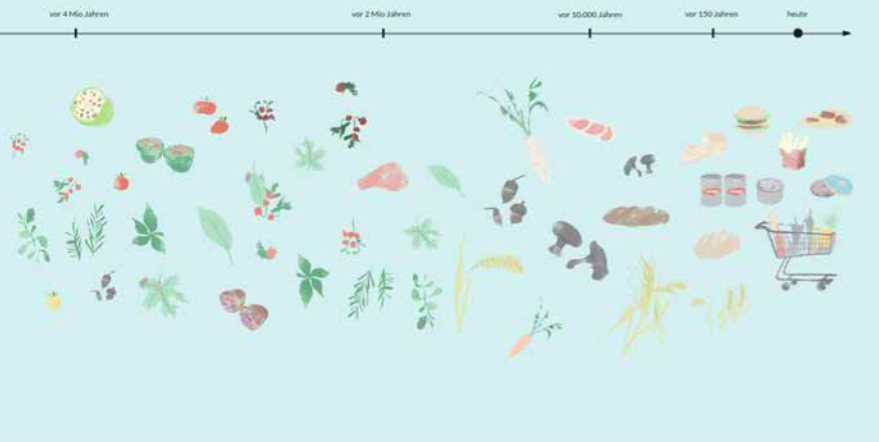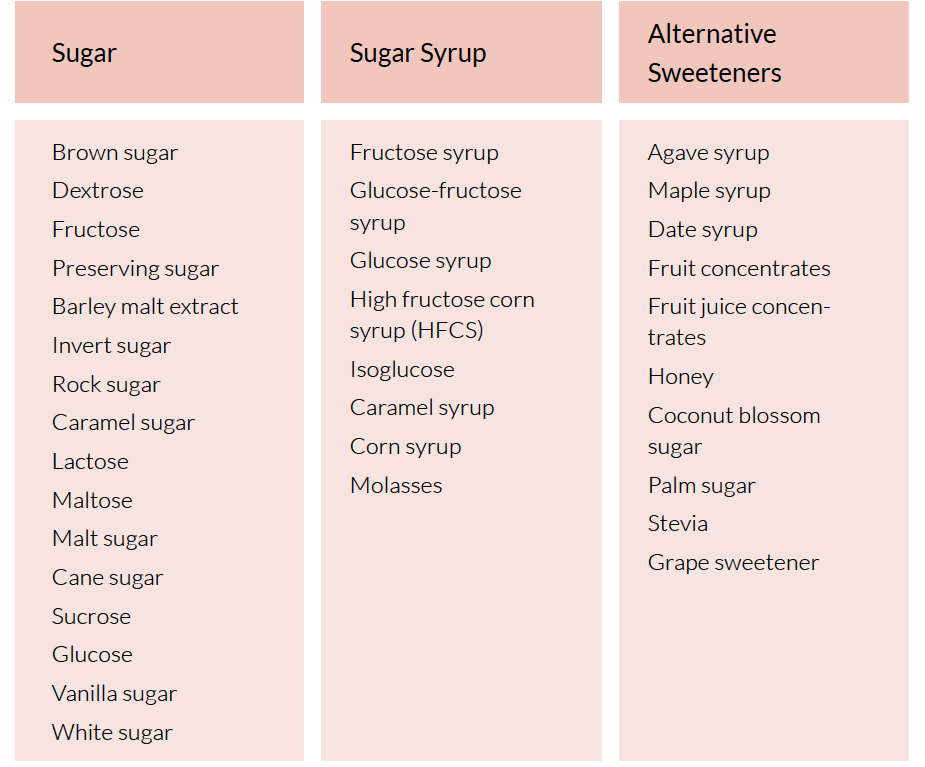“Sugar is not only sweet, but also dangerous.”
This statement was made by Dr. Max Buker 20 years ago. Max Otto Bruker was a German author, physician, and advocate of whole food nutrition. After decades of research, he actually put sugar on the same level as nicotine, alcohol, and coffee, calling the sugar industry, “a sociopolitical disaster.”
Undeterred, sugar consumption took its course in the world and is largely responsible for the fact that we are now in the midst of the most serious nutritional shift in history.
In this article you can find out …
- how we got to this point,
- how sugar is so dangerous,
- what health consequences are associated with consuming too much sugar, and
- how you can free yourself from an insatiable craving for sweets.
Historical view
Sugar production and consumption is actually still quite young. Sugar cane first came to Central and Northern Europe from Persia in the 11th century and was eventually cultivated on a large scale about 400 years later, particularly in Latin America, to meet the growing European demand for sugar.
In the early 19th century, the European sugar industry gradually emerged and the first factories for processing sugar cane were built.

Production
Sugar production involves an intensive processing procedure:
First, the harvested sugar beets are washed and shredded in the sugar factory. Hot water is then used to leach out the raw juice, dissolving out 99% of the sucrose. By stirring in milk of lime and creating a strong alkaline reaction, this further “contaminates” the sugar substance and thus strips it of almost all of its vitamins.
Next, in a multi-stage evaporation process, the thin sugar juice is 70% thickened. The brown sugar that results after crystallization contains sucrose and some small traces of vitamins and minerals, which provide a caramel-like aroma..
> > > Sucrose is a disaccharide consisting of 1 part fructose (fruit sugar) and 1 part glucose (grape sugar)..
In the final stages of processing, everything that is not sucrose is stripped away, a process called refining. And in the last step, large centrifuges separate the molasses from the sugar crystals. The result is white crystal sugar, the household sugar that we all know.
Breaking down this manufacturing process makes it clear that household sugar is a pure isolate. All of the vital substances have been removed, and the original structure of active nutrients and substances has been completely destroyed. What’s left is an isolated concentrate made of 50% glucose and 50% fructose, which is NOT something that we see anywhere in nature.

There was a time when humans met their carbohydrate needs with wild fruits and roots and did not eat any kind of isolated sugar.
But in the last 150 years, the average sugar consumption per capita has risen to 100 g of sugar a day, and an unimaginable 35 kg a year.
Health problems and risks
This huge increase in carbohydrate intake shows that we are in the midst of the most serious dietary shift in history.
Humans have not eaten processed flour – or any type of isolated sugar – for thousands of years. These are almost unmanageable changes for our bodies, and aside from tooth decay, they manifest themselves in several health problems:
1. Nutrient deficiency
If we were to eat a sugar beet as a whole, we’d be getting fiber, vitamins, and minerals as well as the carbohydrates. Nature has combined everything in fruits to provide a balanced source of nutrients.
Unfortunately, household sugar & co. no longer has any of those nutrients. A glance at the nutritional facts table amazes us:
100 g of sugar contains: 100% carbohydrates, 0% fat, 0% protein, 2 mg potassium, 2 mg calcium, and all other mineral and vitamin columns register a 0.
Since sugar provides no vitamins, minerals, or fiber, the body has to obtain the substances that it needs to process the sugar from its own stores. In particular, it’s argued that the body uses more vitamin B1 and calcium when we consume a lot of sugar.
Inevitably, people who eat a lot of foods with isolated carbohydrates will eventually be affected by vitamin and mineral deficiencies at some point. And here we can actually lump sugar, white flour, and white rice together. All three of these have lost almost all of their nutrient diversity as a result of intensive processing.
The consequences of constant nutrient deficiency include infectious diseases, cavities, osteoporosis, hyperactivity, listlessness, or premature aging.
2. Obesity
A high and frequent sugar intake promotes the development of overweight and obesity, as well as numerous secondary diseases.
A recent press release from the German Society for Nutrition makes it clear that obesity is on the rise in Germany and is becoming a serious health threat for more and more people. This development is particularly alarming in children and adolescents.
Obesity is defined as severe overweight characterized by an increase in body fat above the normal level, often with pathological effects.
To give an example, severe obesity will sooner or later lead to physical struggles like shortness of breath, reduced performance, joint wear and tear, high blood pressure, arteriosclerosis, and diabetes, which are all grouped together under “metabolic syndrome.”
3. Diabetes
Poor nutrition, often in conjunction with lack of exercise, can also lead to diabetes.
Foods high in sugar cause an above-average rise in blood sugar levels. As a result, the pancreas has to keep providing huge amounts of insulin to get the sugar out of the blood and into the cells. If the cells are constantly oversaturated with sugar, eventually they become blunted and stop responding to insulin (which is called “insulin resistance”), and the blood sugar level remains high.
In the long term, a permanently raised blood sugar level leads to additional damage like changes in the blood vessels, circulatory disorders, dementia, and much more.
Are you interessted in gaining a comprehensive understanding of the health benefits of a plant-based diet? Download the curriculum for our Holistic Nutrition Coach training program.
4. Inflammation
According to Dr. Probst, all chronic diseases are caused by inflammation, which is mainly triggered by a high-carbohydrate diet.
It’s been known for some years that insulin, in addition to functioning as a door opener into the cells, has a very problematic side effect: it activates a signal molecule, mTOR (mechanistic Target of Rapamycin), which has a pro-inflammatory effect throughout the body and can accelerate the aging process.
5. Dementia
Dementia is a disease that causes fear in a lot of cultures. After all, the likelihood of becoming demented later in life is rapidly increasing, as the number of people affected by this is constantly on the rise. But how justified is the fear of getting dementia?
Important contexts give some clarification:
More and more, dementia is also referred to as type 3 diabetes. This is because there’s now a proven connection between insulin resistance, subtle chronic inflammatory processes, nerve cells in the brain impaired by protein deposits, and dementia. So this means that everyone can set a new course for themselves with a healthy and natural lifestyle.
6. Attention deficit/hyperactivity disorder ADHD
Sugar metabolism has a significant influence on our metabolism, but also on the neurotransmitter balance in the brain. Imbalances in the brain can cause restlessness, as well as attention and memory disorders.
Most people have experienced the way sweets have a relaxing effect – at first. This is because eating sweets is followed not only by the release of insulin but also by the activation of the feel-good hormones serotonin and dopamine.
But if we eat too much sugar and carbohydrates, this causes an up-and-down effect for our insulin release, and the neurotransmitter balance gets out of sync. When the dopamine and serotonin metabolism are out of whack, eating behavior, motivation, and attention are subsequently derailed. This causes feelings of restlessness, inability to concentrate, or a bad mood.

Insatiable craving for sweets
For some, simply having the resolution to eat less sugar may be enough to actually reduce sugar consumption. But unfortunately for many, wanting to make a change in diet instead ends in great disillusionment, and typically not without downright withdrawal symptoms.
There are many reasons for this:
- Having a love of sweets is actually innate for us. When our ancestors stumbled upon sweet fruits in the wild, it made perfect sense for them to eat as much of them as they could. After all, they didn’t know the next time they would find such a wonderful meal.
- Too much glucose throws blood sugar levels out of balance. If we eat a meal that contains large amounts of monosaccharides and disaccharides, and thus rapidly released glucose, the blood glucose level rises rapidly as a result. Subsequent high insulin secretions cause the glucose level to drop again quickly, which creates a new feeling of hunger. This is also referred to as the sugar-insulin swing.
- Sometimes cravings and a never-ending feeling of hunger come as a result of nutrient deficiencies, and it’s definitely not easy to differentiate between hunger for sweets, and hunger for foods that are actually supposed to remedy these deficiencies.
- Sugar is addictive. After years of consuming copious amounts of isolated carbohydrates, the body becomes accustomed to it, which develops a physical dependence. This allows eating habits that are linked to various moods. Sugar consumption leads to the release of the happiness hormone dopamine in the brain, which creates a feeling of security or reward. Thus, sweets have a relaxing effect, lift our mood, and remind us of pleasant moments. But when this craving for sweets ends up becoming a substitute for deeper needs, this is known as “emotional eating.”.
- There’s also an intestinal fungal infection that can cause cravings for sweets. Candida fungi thrive in a “sugary” intestinal environment, but become greedy and uncomfortable during periods of low carbohydrate intake, which can manifest itself in cravings for sweets.
Relief strategies for sweet cravings
If you have a strong craving for sweets, it’s first of all very important to know about the different causes of cravings, and then you can analyze exactly whether you may already be stuck in an addiction, or whether good intentions and corresponding actions are enough to get yourself out of the cycle.
Tips for switching to a low-sugar diet:
- Avoid sugary drinks – drink high-quality water instead!
- Start the day with a sugar-free breakfast!
- Eat lots of fresh, raw foods, with as many bitter compounds as possible!
- Wild herbs counteract nutrient deficiencies!
- Choose valuable carbohydrate-rich foods like sprouts, nuts, or sweet potatoes.
- Eat convenience products as little as possible.
- Read ingredient lists and also learn how to recognize hidden sugars.
- ASwitch to alternative sweeteners!
- Get into the habit of chewing thoroughly!
Sugar labeling
Reading the ingredient lists is not that easy for most people – sugar is hidden behind a lot of different names, especially all kinds of sugar syrup. Syrup is cheap, it has an even more intense sweetening quality due to a typically higher fructose content, and it has now crept into most convenience foods. To escape this problem, the best thing is really just to scour every ingredient label you come across..
Sugar can carry the following designations:

Watch out!
When looking through the ingredient lists, it can be easy to misjudge the sugar content and the sweeteners used.
- Sugar is hidden behind names that don’t necessarily indicate that it’s sugar, like dextrose or isoglucose.
- When there are multiple listings of sweeteners on one ingredient list, they tend to slip to the bottom of the list where they are less conspicuous, but still add up to enormous amounts of sugar.
- Products labeled “not sweetened,” like rice milk, still manage to contain 7.2 g of sugar per 100 ml, since the addition of enzymes converts long-chain carbohydrates into short-chain ones.
- Products that don’t suggest a necessarily high sugar content, like pizza, vegetarian spreads, etc., still contain various added sugars.
So is the solution to use alternative sweeteners?
We will answer this in the following article:
Are alternative sweeteners healthy?
Would you like to join our unique, based on nutritional sciences and practice-oriented training program for gaining a high level of health?
We are more than happy to inform you about our training program on our website!





0 Comments